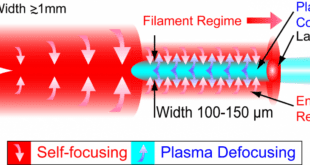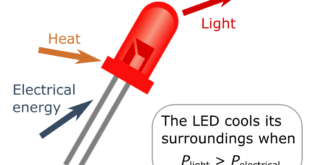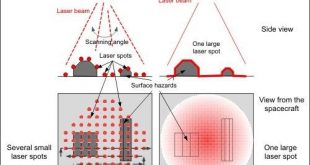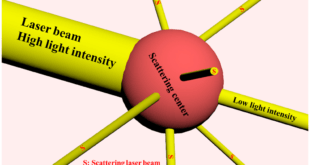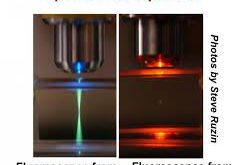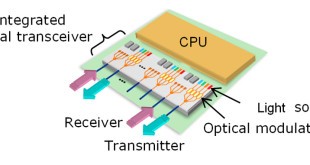The Laser Directed Energy Weapons (DEWs) offer a transformational ‘game changer’ to counter asymmetric and disruptive threats, while facing increasingly sophisticated traditional challenges. Laser technology provides major advantages for military applications over kinetic weapons due to High precision and rapid on-target effect, precise and scalable effects, avoidance of collateral damage …
Read More »Thermophotonics cooling with light-emitting diodes
Thermophotonics (often abbreviated as TPX) is a concept for generating usable power from heat which shares some features of thermophotovoltaic (TPV) power generation. Thermophotonics was first publicly proposed by solar photovoltaic researcher Martin Green in 2000. However, no TPX device is known to have been demonstrated to date, apparently because …
Read More »Anti-Reflection (AR) Coatings
Optics are employed in virtually every area of military operations, from vision systems and target designators used by troops on the ground, through guidance systems utilized in both manned and unmanned aircraft, to reconnaissance and surveillance packages carried by satellites in Earth orbit. These optics are often subjected to large …
Read More »Quantum enhanced LIDAR will help reduce environmentally damaging methane leaks from the oil and gas industry
In purely economic terms, methane leaks from well-heads and pipelines cost the oil and gas industry between $6bn and $30bn a year. In the US, methane leaks from the natural gas and petroleum industry are now the number one source of methane emissions, surpassing livestock digestion and landfill. Although it …
Read More »Quantum microwave photonics
By harnessing quantum superposition and entanglement, remarkable progress has sprouted over the past three decades from different areas of research in communication, computation and simulation. Microwave photonics (MWP) typically using classic optical methods and devices to generate, transport, and process radio-frequency (RF) signals is a recently developed area of …
Read More »DARPA advances Microwave Photonics for RF signal processing and radars
The military/defense industry continues to encourage the advancement of multifunctional receivers. Yet the demands for higher-frequency operation, increased bandwidth, increased dynamic range, and enhanced sensitivity creates unique design challenges for present technology. Size, weight, power, and cost (SWAP-C) dynamics heavily influence the military/defense industry’s value for a particular technology. …
Read More »Flash Lidars have applications from Situational awareness, collision avoidance to improved battlefield visualization, line-of-sight analysis and urban warfare planning.
LIDARs are rapidly gaining maturity as very capable sensors for a number of applications such as imaging through clouds, vegetation and camouflage, 3D mapping and terrain visualization, meteorology, navigation, and obstacle avoidance for robotics as well as weapon guidance. LIDAR data is both high-resolution and high-accuracy, enabling improved battlefield visualization, …
Read More »Nanomaterials for protection from laser weapons
Laser attacks targeting pilots and air crews are a major concern across the world with most attacks reported to take place during take-off and landing. According to figures from the US Federal Aviation Authority, there were 6,753 laser illuminations reported in 2017. Until recently, the expense of lasers had limited their use …
Read More »Emerging multiphoton technologies and applications
Photonics is emerging as a multidisciplinary new frontier of science and technology and is capturing the imagination of scientists and engineers worldwide because of its potential applications to many areas of present and future information and image processing technologies. Photonics is the analog of electronics in that it describes the …
Read More »DARPA PIPES developing integrated optical transceiver capabilities into multi-chip modules for high throughput parallel processing
Parallelism – or the act of several processors simultaneously executing on an application or computation – has been increasingly embraced by the microelectronics industry as a way of sustaining demand for increased system performance. Today, parallel computing architectures have become pervasive across all application domains and system scales – from …
Read More » International Defense Security & Technology Your trusted Source for News, Research and Analysis
International Defense Security & Technology Your trusted Source for News, Research and Analysis
